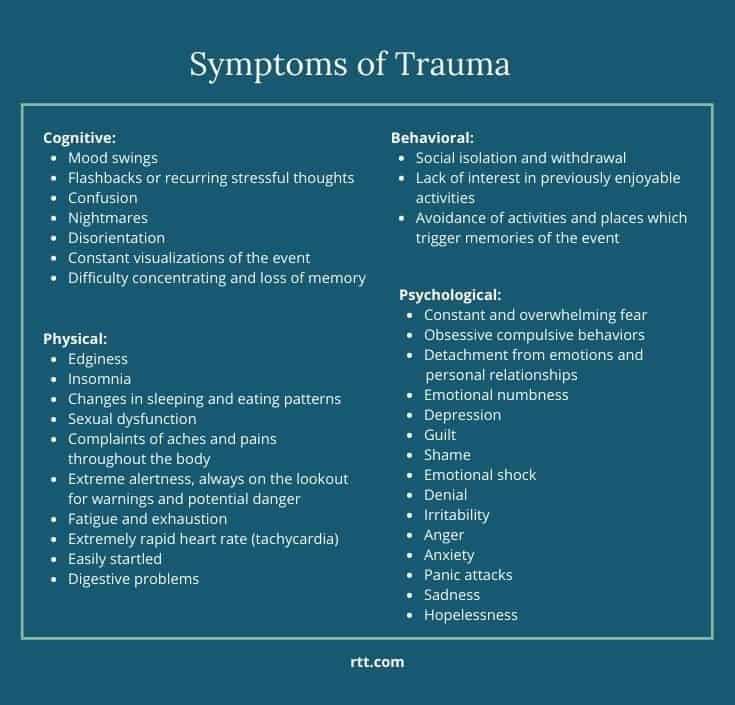

The negative emotional state that persists (fear, horror, anger, guilt, or shame).


Avoidance: Persistent avoidance of stimuli associated with the traumatic event, beginning after the traumatic event, as demonstrated by one of the following:.Physiological responses to internal or external cues that represent or resemble an aspect of the traumatic event.Intense or prolonged psychological distress due to being exposed to internal or external cues that represent or resemble a traumatic event.Dissociative reactions such as flashbacks occur on a continuum, with the most extreme expression being a complete loss of awareness of present surroundings in children, trauma-specific reenactment may occur in the play.Recurrent distressing dreams in which the content and/or effect of the dream is related to the traumatic event in children, frightening dreams without recognizable content may occur.Recurrent, involuntary, and intrusive distressing memories of the traumatic event in children, repetitive plays in which themes/aspects of the traumatic event are expressed may occur.Intrusion symptoms: One or more of the following is associated with the traumatic event, beginning after the traumatic event occurred:.Excessive or repeated exposure to aversive details of the traumatic event (first responders collecting human remains or police officers repeatedly exposed to details of child abuse) does not apply to exposure through electronic media, television, movies, or pictures, unless this exposure is related to work.Learning that the traumatic event occurred to a close family member or close friend if actual or threatened death of a family member or friend, the event must have been violent or accidental.Seeing the event firsthand as it happened to others.Exposure: Exposure to actual or threatened death, serious injury, or sexual violence in more than one of the following ways (may be multiple events):.To be diagnosed with PTSD, a person must exhibit the following five types of symptoms: Some people with PTSD have long periods when their symptoms are less noticeable, followed by periods when they worsen. However, in a small percentage of cases, symptoms may not appear for months or even years. They usually appear within the first month of a traumatic event.

Symptoms of post-traumatic stress disorder ( PTSD) can have a significant effect on your daily life. The 5 signs of PTSD include exposure, intrusion symptoms, avoidance, altered mood, and altered reactivity.


 0 kommentar(er)
0 kommentar(er)
